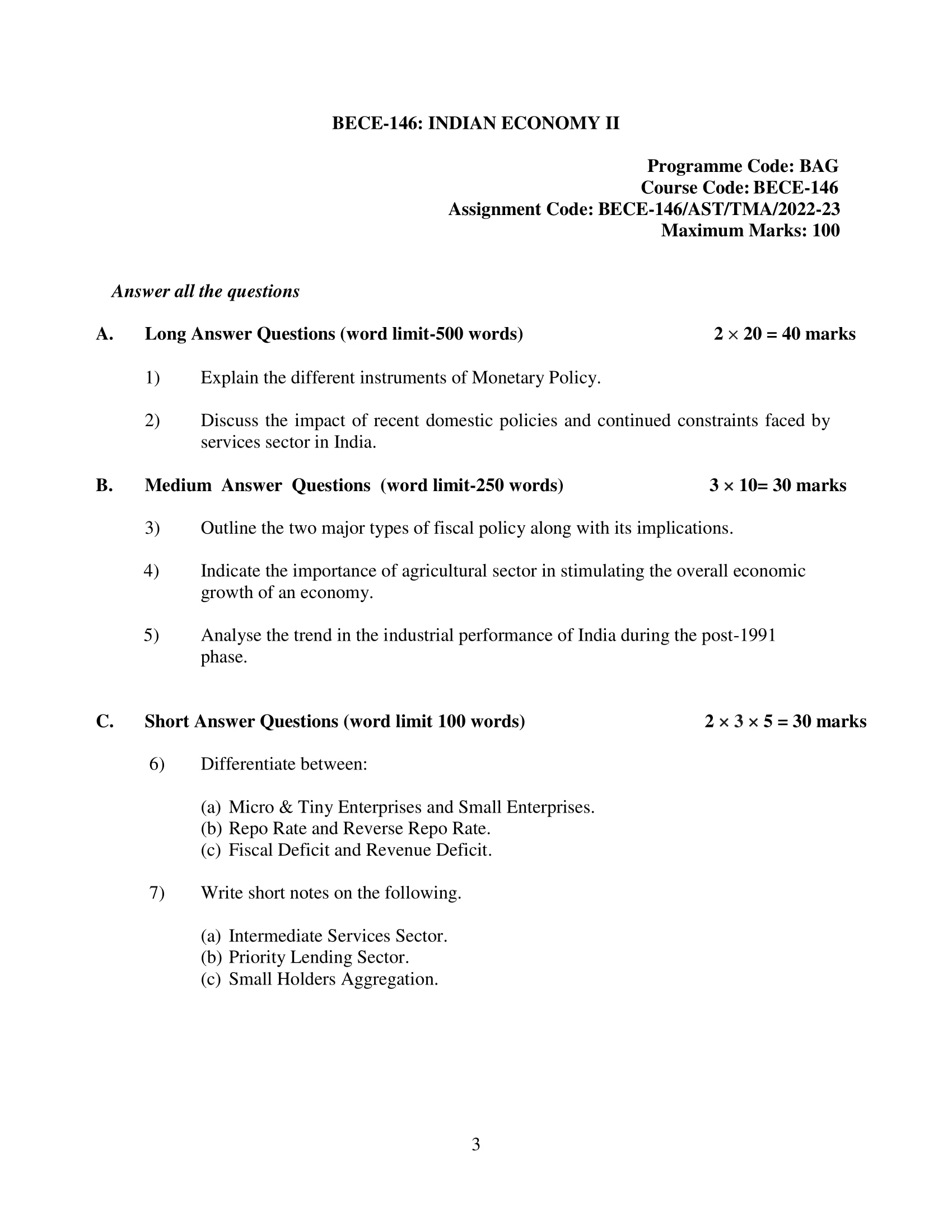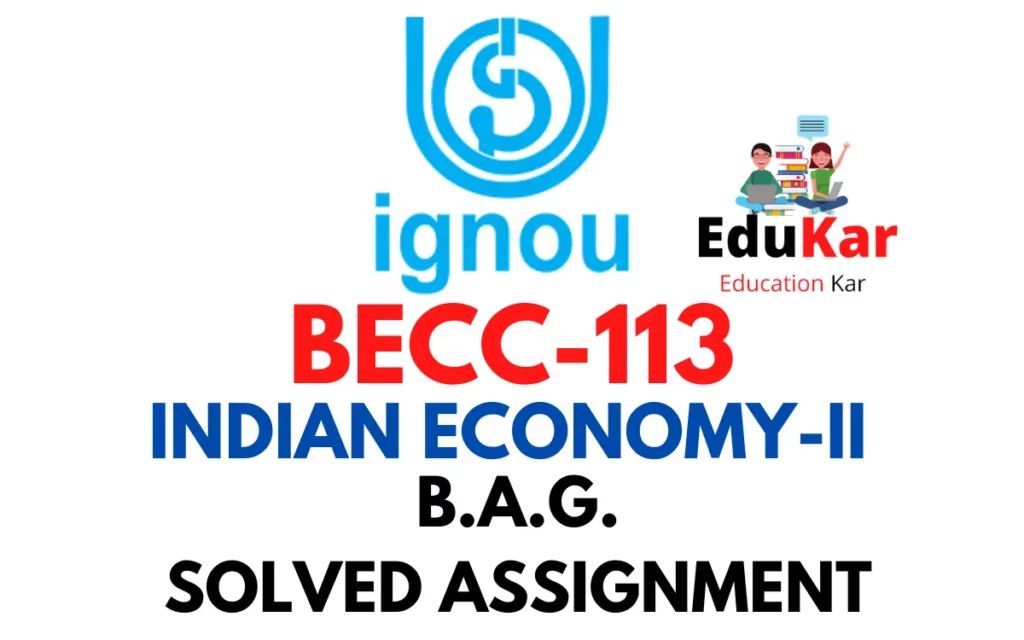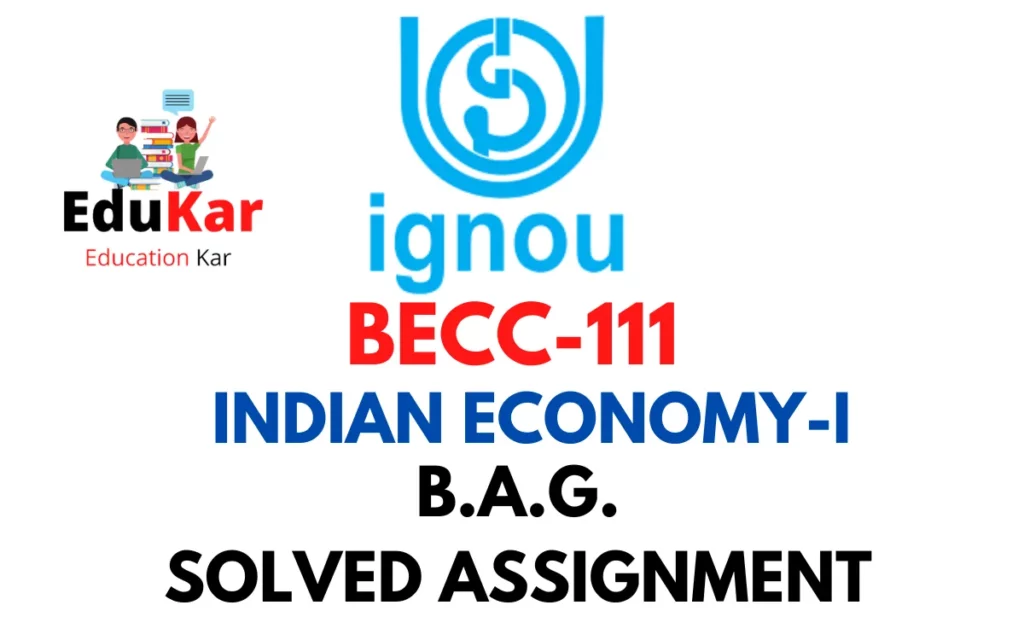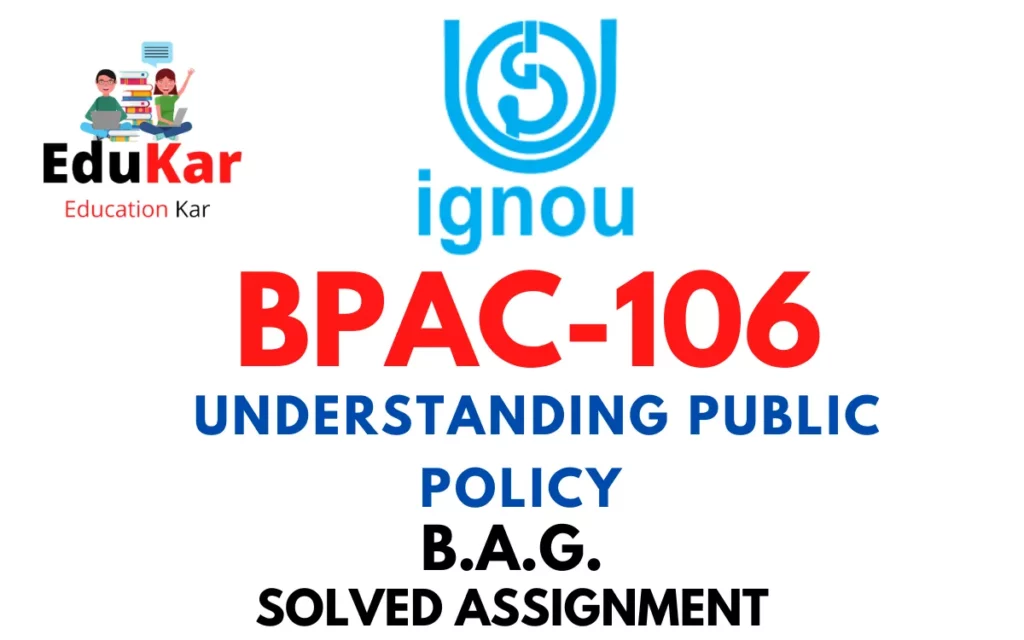Contents
- 1 A. Long Answer Questions (word limit-500 words) 2×20=40 marks
- 2 1) Explain the different instruments of Monetary Policy.
- 3 2) Discuss the impact of recent domestic policies and continued constraints faced by services sector in India.
- 4 B. Medium Answer Questions (word limit-250 words) 3×10=30 marks
- 5 3) Outline the two major types of fiscal policy along with its implications.
- 6 4) Indicate the importance of agricultural sector in stimulating the overall economic growth of an economy.
- 7 5) Analyse the trend in the industrial performance of India during the post-1991phase.
- 8 C. Short Answer Questions (word limit 100 words) 2×3×5 =30 marks
- 9 6) Differentiate between:
- 10 (a) Micro & Tiny Enterprises and Small Enterprises.
- 11 (b) Repo Rate and Reverse Repo Rate.
- 12 (c) Fiscal Deficit and Revenue Deficit.
- 13 7) Write short notes on the following.
- 14 (a) Intermediate Services Sector.
- 15 (b) Priority Lending Sector.
- 16 (c) Small Holders Aggregation.

| Title | BECE-146: IGNOU BAG Solved Assignment 2022-2023 |
| University | IGNOU |
| Degree | Bachelor Degree Programme |
| Course Code | BECE-146 |
| Course Name | Indian Economy II |
| Programme Name | Bachelor of Arts (General) |
| Programme Code | BAG |
| Total Marks | 100 |
| Year | 2022-2023 |
| Language | English |
| Assignment Code | BECE-146/AST/TMA/2022-23 |
| Last Date for Submission of Assignment: | For June Examination: 31st April For December Examination: 30th September |

A. Long Answer Questions (word limit-500 words) 2×20=40 marks
1) Explain the different instruments of Monetary Policy.
Ans: Monetary policy refers to the actions taken by a central bank to regulate the supply of money in an economy in order to achieve its macroeconomic objectives, such as price stability, full employment, and economic growth. There are several instruments that central banks use to implement monetary policy. These include:
- Open Market Operations: This is the most widely used instrument of monetary policy. It involves the central bank buying or selling government securities on the open market to increase or decrease the money supply in the economy.
- Reserve Requirements: Central banks can set reserve requirements for commercial banks, which is the minimum amount of funds that the banks must hold in reserve. By changing the reserve requirements, the central bank can control the money supply in the economy.
- Discount Window Lending: The central bank can provide short-term loans to commercial banks through its discount window. By increasing or decreasing the availability of these loans, the central bank can influence the money supply in the economy.
- Interest Rates: Central banks can influence the cost of borrowing by changing the interest rate at which it lends money to commercial banks. This can encourage or discourage borrowing and spending, affecting the money supply and economic activity.
- Moral Suasion: The central bank can use its influence and persuasion to encourage commercial banks to adopt specific policies or change their behavior. This is a less direct form of monetary policy, but can still be effective in certain circumstances.
- Foreign Exchange Operations: Central banks can also use their foreign exchange reserves to buy or sell foreign currencies, influencing the exchange rate and affecting international trade and the money supply.
- Direct Lending to the Government: In some cases, central banks may lend directly to the government to finance its spending, increasing the money supply in the economy.
- Quantitative Easing: This is a monetary policy tool used by central banks in response to financial crises or economic downturns. It involves the central bank buying large amounts of government securities or other assets, increasing the money supply and lowering interest rates to stimulate economic activity.
Each instrument of monetary policy has its own advantages and disadvantages, and the choice of which instrument to use depends on the specific goals of the central bank and the economic conditions of the country. However, the most commonly used instruments are open market operations and interest rate adjustments.
2) Discuss the impact of recent domestic policies and continued constraints faced by services sector in India.
Ans: The services sector plays a crucial role in the Indian economy, contributing to more than 55% of the country’s Gross Domestic Product (GDP). Despite its significance, the sector has faced numerous challenges and constraints that have impacted its growth and development. In recent years, the Indian government has implemented several domestic policies aimed at boosting the growth of the services sector.
One of the recent policies introduced by the government is the Goods and Services Tax (GST), which has created a unified market for goods and services in India. This has made it easier for services providers to operate across different states, reducing the compliance burden and enabling the growth of the sector. Additionally, the government has launched various initiatives such as Digital India, Make in India, and Skill India to promote the growth of the services sector by encouraging the adoption of technology and providing skilled manpower to the industry.
Despite these efforts, the services sector in India continues to face several constraints that hinder its growth and development. One of the major constraints faced by the sector is the lack of infrastructure, particularly in rural areas. This has made it difficult for services providers to reach and serve customers in these regions, limiting the potential growth of the sector.
Another challenge faced by the services sector is the inadequate availability of skilled manpower. Despite the government’s efforts to provide skill development programs, the sector continues to suffer from a shortage of skilled professionals, particularly in areas such as technology and finance. This shortage of skilled manpower has made it difficult for services providers to keep up with the demands of an increasingly competitive global market.
In addition, the services sector in India also faces regulatory challenges. For example, the sector is subject to multiple regulations and compliance requirements that can be time-consuming and costly. This has made it difficult for services providers to focus on their core business operations and has created a burden for the sector as a whole.
Finally, the services sector in India continues to face competition from global players. The sector has to compete with well-established international services providers, who have a larger pool of resources and a more extensive market presence. This has made it difficult for Indian services providers to grow and develop, especially in a highly competitive global market.
B. Medium Answer Questions (word limit-250 words) 3×10=30 marks
3) Outline the two major types of fiscal policy along with its implications.
Ans: Fiscal policy refers to the government’s use of spending and taxation to influence the economy. There are two main types of fiscal policy: expansionary fiscal policy and contractionary fiscal policy.
Expansionary fiscal policy involves increasing government spending or decreasing taxes to stimulate economic growth. This policy is typically used during times of recession or low economic activity. The idea behind this policy is that increased spending by the government will increase overall demand, leading to an increase in production and jobs. Additionally, lower taxes will provide individuals with more disposable income, leading to increased consumer spending. The implications of expansionary fiscal policy include increased inflation, higher government debt and reduced saving.
Contractionary fiscal policy, on the other hand, involves decreasing government spending or increasing taxes to slow down economic growth and reduce inflation. This policy is typically used during times of high economic activity or when the economy is growing too fast. The idea behind this policy is that reducing government spending will decrease demand, leading to a decrease in production and jobs. Additionally, higher taxes will reduce disposable income, leading to reduced consumer spending. The implications of contractionary fiscal policy include reduced inflation, lower government debt, and increased saving.
4) Indicate the importance of agricultural sector in stimulating the overall economic growth of an economy.
Ans: The agricultural sector plays a vital role in stimulating the overall economic growth of an economy. Agriculture is the backbone of many developing countries and can provide a strong foundation for sustained economic growth. Here are several ways in which the agricultural sector contributes to the economy:
- Job Creation: The agricultural sector is a major source of employment, particularly in rural areas. An increase in agricultural productivity leads to an increase in demand for labor, creating new job opportunities and reducing poverty.
- Food Security: A strong agricultural sector helps to ensure food security by increasing the production of staple crops, thereby reducing dependence on food imports. This also helps to stabilize food prices, which is important for reducing poverty and improving living standards.
- Foreign Exchange Earnings: Agricultural exports provide a significant source of foreign exchange earnings for many developing countries. The increase in export revenue can help to finance imports of essential goods and services, supporting economic growth.
- Rural Development: The growth of the agricultural sector has a positive impact on rural development. Improved infrastructure, such as roads, bridges, and irrigation systems, as well as access to markets and financial services, all help to improve the living standards of rural communities.
- Linkages with other sectors: The agricultural sector is closely linked to other sectors such as manufacturing, transportation, and trade. A strong agricultural sector creates demand for goods and services from these other sectors, leading to increased economic growth.
5) Analyse the trend in the industrial performance of India during the post-1991phase.
Ans: The post-1991 phase in India is characterized by significant reforms in the country’s industrial sector, leading to a significant improvement in its performance. Here are several key trends in the industrial performance of India during this period:
- Growth in Manufacturing: The manufacturing sector has grown rapidly in India since 1991, driven by the liberalization of trade and investment policies, the introduction of new technologies, and the availability of skilled labor. As a result, the share of manufacturing in India’s GDP has increased from 16% in 1991 to around 20% in recent years.
- Increase in Foreign Direct Investment (FDI): FDI inflows into India have increased significantly since the 1990s, particularly in the manufacturing sector. This has provided the necessary capital and technology to support the growth of the industrial sector, particularly in high-tech industries such as electronics and software.
- Expansion of Small and Medium Enterprises (SMEs): The post-1991 period has seen the expansion of small and medium-sized enterprises (SMEs) in India, particularly in the manufacturing sector. SMEs have become an important source of employment and economic growth, particularly in rural areas.
- Improved Infrastructure: The Indian government has made significant investments in infrastructure since 1991, including improvements in transportation, energy, and communications. These investments have helped to reduce the costs of production and increase competitiveness, contributing to the growth of the industrial sector.
- Emergence of New Industries: The post-1991 period has seen the emergence of new industries in India, such as the software and biotechnology industries. These new industries have contributed to the diversification of the industrial sector, reducing its dependence on traditional industries such as textiles and agriculture.
C. Short Answer Questions (word limit 100 words) 2×3×5 =30 marks
6) Differentiate between:
(a) Micro & Tiny Enterprises and Small Enterprises.
Ans: Micro, Tiny and Small Enterprises are terms used to categorize businesses based on their size and turnover.
Micro Enterprises are businesses with a turnover of less than Rs. 5 million and have fewer than 10 employees.
Tiny Enterprises are businesses with a turnover of less than Rs. 10 million and have fewer than 10 employees.
Small Enterprises are businesses with a turnover of less than Rs. 50 million and have fewer than 50 employees.
Therefore, the main difference between these enterprises is the size and turnover of the business, with micro and tiny enterprises being the smaller and less established compared to small enterprises.
(b) Repo Rate and Reverse Repo Rate.
Ans: Repo rate and reverse repo rate are monetary policy tools used by the central bank (Reserve Bank of India) to regulate the supply of money in the economy.
Repo rate refers to the interest rate at which commercial banks can borrow money from the central bank for a short period (typically overnight). A higher repo rate means that it will be more expensive for banks to borrow money, which can discourage borrowing and spending, helping to control inflation.
On the other hand, reverse repo rate is the interest rate at which the central bank borrows money from commercial banks. A higher reverse repo rate means that the central bank is offering a higher return on the money it borrows, encouraging banks to park their surplus funds with the central bank instead of lending it to the public.
In summary, the repo rate is used by the central bank to control the cost of borrowing for banks and regulate the supply of money in the economy, while the reverse repo rate is used to manage the excess liquidity in the banking system.
(c) Fiscal Deficit and Revenue Deficit.
Ans: Fiscal Deficit and Revenue Deficit are two important concepts in public finance and economics.
Fiscal Deficit refers to the difference between the government’s total revenue and total expenditure in a given financial year. If the government’s total expenditure is higher than its total revenue, it results in a fiscal deficit. A fiscal deficit means that the government is spending more than it is earning and must finance the deficit by borrowing from the public or from foreign sources.
Revenue Deficit, on the other hand, refers to the excess of government revenue expenditure over its revenue receipts (taxes and non-tax revenues). It represents the shortfall in the government’s ability to earn enough revenue to meet its expenditure. A revenue deficit means that the government is spending more on revenue expenditures (such as subsidies, pensions, etc.) than it is earning in revenue.
7) Write short notes on the following.
(a) Intermediate Services Sector.
Ans: The Intermediate Services Sector, also known as the wholesale and retail trade sector, refers to the activities involved in the buying and selling of goods and services. This sector acts as an intermediary between producers and consumers, facilitating the flow of goods and services in the economy. The intermediate services sector is a crucial component of the economy, as it helps to increase efficiency by reducing the cost of transactions and ensuring the smooth distribution of goods and services to consumers. This sector also plays a significant role in generating employment, particularly in the retail trade sector, and contributes to the growth of the economy by facilitating the exchange of goods and services.
(b) Priority Lending Sector.
Ans: Priority Lending Sector refers to specific sectors of the economy that are given priority by financial institutions in terms of access to credit and financing. These sectors are considered critical to the economic development of a country and are usually identified by the government or central bank. Examples of priority lending sectors include agriculture, small and medium-sized enterprises (SMEs), affordable housing, and education. The aim of giving priority to these sectors is to provide them with the necessary financing to support their growth and development, which in turn contributes to the overall economic growth of the country. By providing credit at favorable terms and conditions, financial institutions can help to reduce the financial constraints faced by these sectors and support their expansion and growth.
(c) Small Holders Aggregation.
Ans: Small Holders Aggregation refers to the process of grouping small-scale farmers into larger organizations to increase their bargaining power, reduce transaction costs, and improve their access to markets, inputs, and services. Small holders aggregation can help to overcome the limitations faced by small-scale farmers, such as limited access to credit, inputs, and markets, by pooling resources and leveraging their collective bargaining power. This can result in improved production efficiency and increased income for farmers, as well as better market integration and increased food security for communities. Small holders aggregation can also help to address the challenges faced by small-scale farmers, such as limited access to finance, technology, and information, by providing them with access to support services and facilitating their integration into value chains.
How to Download BECE-146 Solved Assignment?
You can download it from the www.edukar.in, they have a big database for all the IGNOU solved assignments.
Is the BECE-146 Solved Assignment Free?
Yes this is absolutely free to download the solved assignment from www.edukar.in
What is the last submission date for BECE-146 Assignment?
For June Examination: 31st April, For December Examination: 30th October















